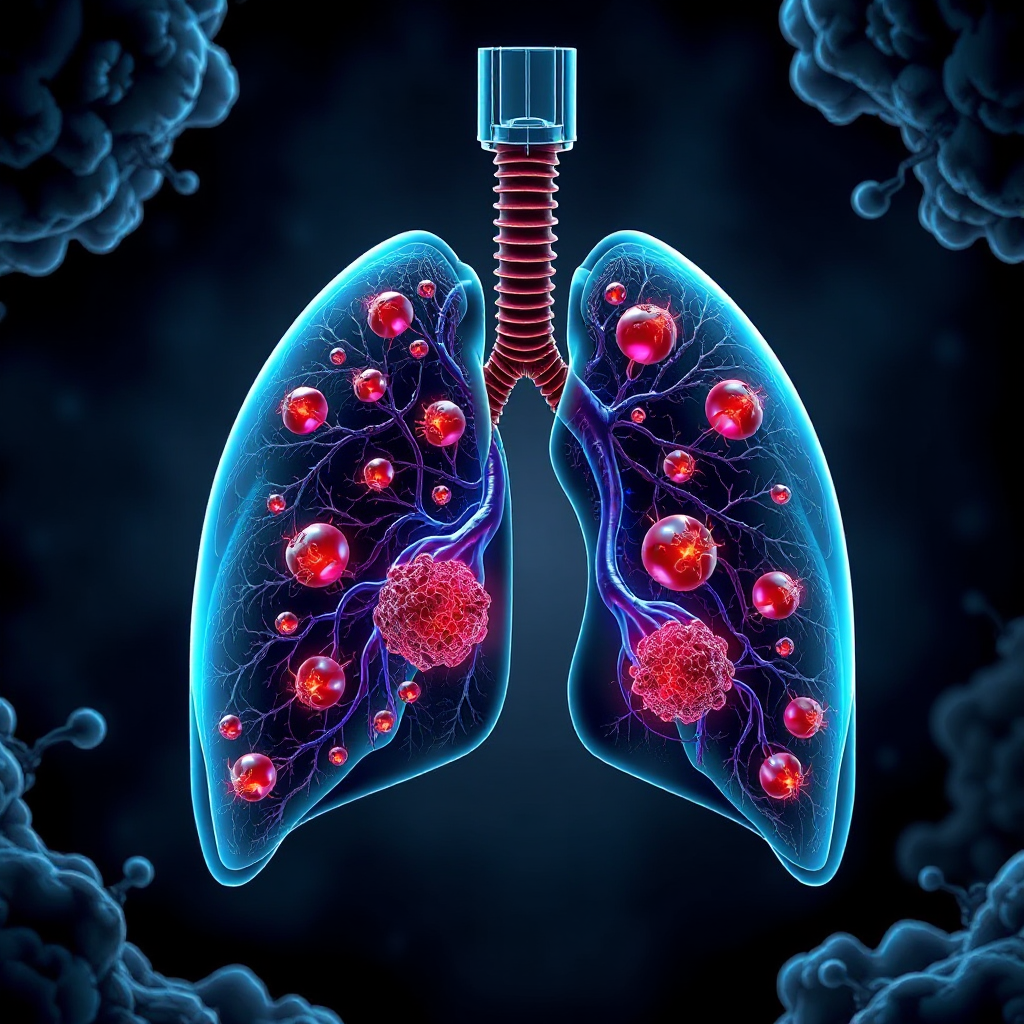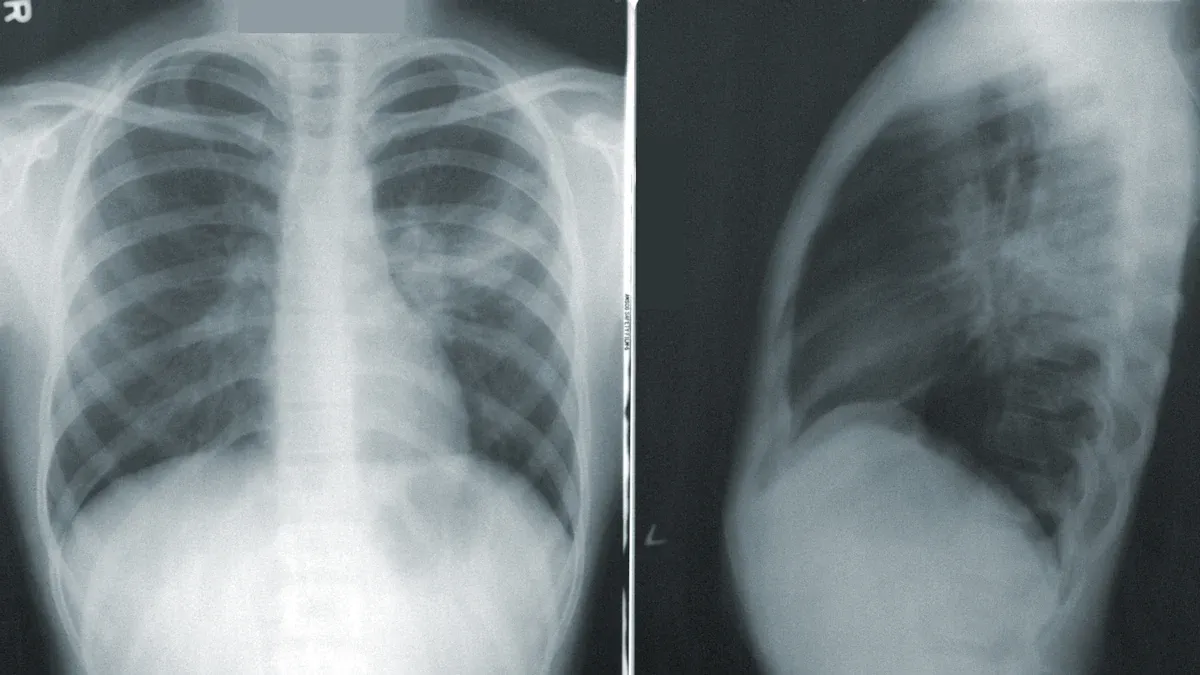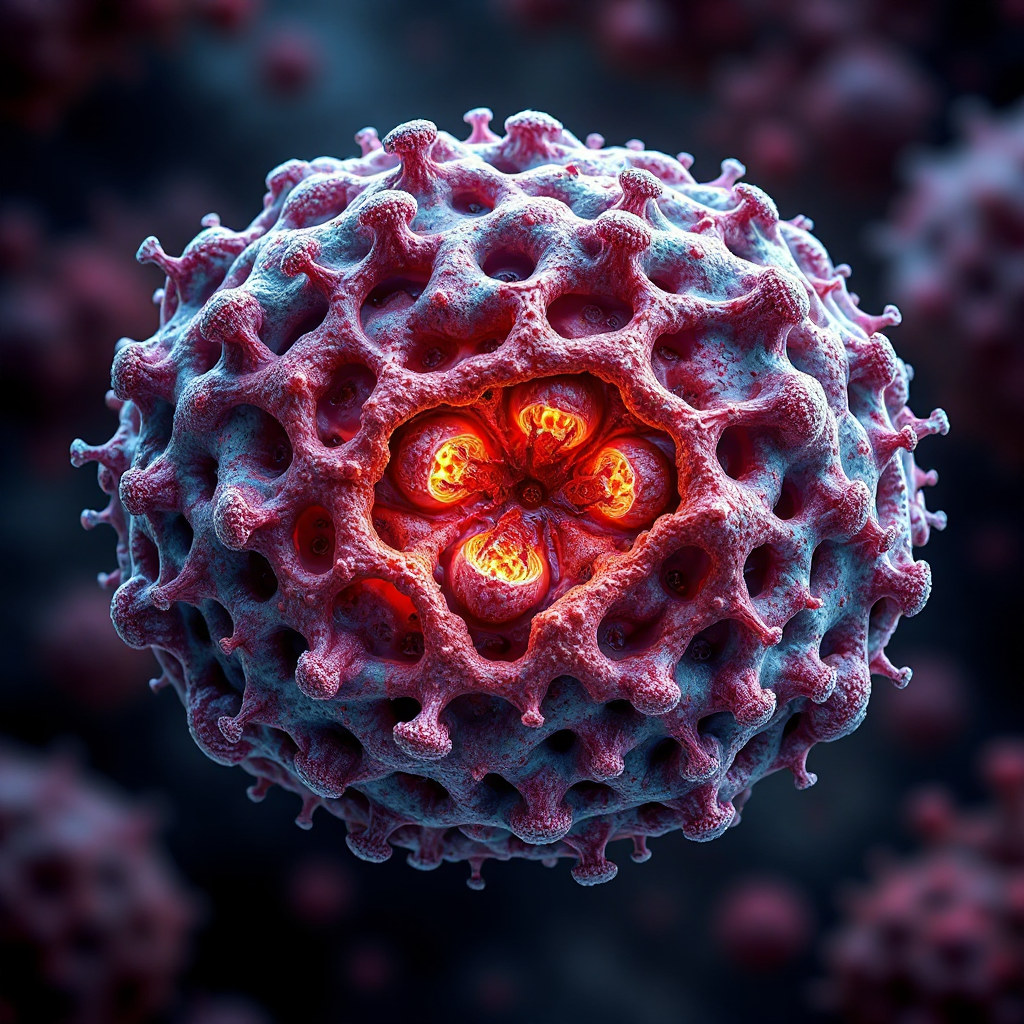Understanding Symptoms and Treatment for Sarcomatoid Carcinoma of the Lung

Sarcomatoid carcinoma of the lung is a rare and aggressive type of lung cancer. It accounts for only 1.4% of all lung cancer cases, affecting approximately 217 out of 14,999 patients. This cancer often progresses quickly, making early detection crucial. You should pay attention to persistent symptoms like coughing or chest pain and seek medical advice promptly. Understanding treatment options and prognosis can help you make informed decisions. While survival rates vary, early-stage diagnosis offers better outcomes, with a 5-year survival rate of 64.7% for stage I patients.
Key Takeaways
Look for early signs like a long-lasting cough or chest pain. Trouble breathing can also be an early symptom.
See a doctor quickly if you cough up blood or lose weight without reason. These could mean the disease is worse.
Know that surgery is often the first treatment for early sarcomatoid carcinoma. Surgery early on can help people live longer.
Learn about new treatments like immunotherapy and targeted medicine. These may give better results for some patients.
Think about palliative care to feel better during treatment. It helps with both body pain and emotional struggles.
Symptoms of Sarcomatoid Carcinoma of the Lung

Early Symptoms
Persistent cough
A persistent cough often serves as one of the first signs of sarcomatoid carcinoma of the lung. You might notice that the cough doesn’t go away over time or worsens. Unlike a typical cough from a cold, this one may feel deeper or more irritating. Paying attention to this symptom can help you identify potential issues early.
Shortness of breath
Shortness of breath can occur even during light activities. You may feel like you’re struggling to catch your breath or that your chest feels tight. This symptom often develops as the tumor grows and begins to affect lung function. If you experience this, it’s important to consult a healthcare provider.
Chest pain or discomfort
Chest pain or discomfort is another early warning sign. You might feel a dull ache or sharp pain in your chest, especially when breathing deeply or coughing. This pain could indicate that the tumor is pressing on nearby tissues or nerves.
Advanced Symptoms
Coughing up blood (hemoptysis)
Coughing up blood, known as hemoptysis, is a serious symptom of sarcomatoid carcinoma of the lung. You may notice streaks of blood in your phlegm or a more significant amount. This symptom often signals advanced disease and requires immediate medical attention.
Unexplained weight loss and fatigue
Unexplained weight loss and fatigue are common as the disease progresses. You might lose weight without trying or feel constantly tired, even after resting. These symptoms occur because cancer affects your body’s ability to function normally.
Symptoms of metastasis (e.g., bone pain, neurological issues)
When sarcomatoid carcinoma of the lung spreads to other parts of the body, you may experience symptoms like bone pain or neurological issues. For example, you might feel pain in your back or limbs or notice changes in your vision or coordination. These symptoms indicate that the cancer has metastasized, which can complicate treatment.
Symptoms of sarcomatoid carcinoma of the lung often overlap with other types of lung cancer. However, its aggressive nature means these symptoms may appear and worsen more quickly. Recognizing these signs early can make a significant difference in your treatment options and outcomes.
Diagnosing Sarcomatoid Carcinoma of the Lung
Clinical Evaluation
Physical examination and medical history
Your doctor will begin by reviewing your medical history and performing a physical examination. They will ask about symptoms like persistent coughing, chest pain, or shortness of breath. They may also inquire about your lifestyle, including smoking habits or exposure to harmful substances like asbestos or industrial chemicals. These factors can increase your risk of developing sarcomatoid carcinoma of the lung.
Identifying risk factors (e.g., smoking, occupational exposure)
Identifying risk factors plays a crucial role in diagnosis. Smoking remains one of the leading causes of lung cancer, including sarcomatoid carcinoma. Occupational exposure to carcinogens, such as silica or diesel exhaust, also raises your risk. If you have a history of these exposures, it’s essential to inform your healthcare provider.
Imaging Techniques
Chest X-rays and CT scans
Imaging techniques like chest X-rays and CT scans help locate tumors and assess their size and shape. CT scans provide more detailed images, making them particularly useful for identifying abnormalities in the lungs. These tools are often the first step in diagnosing sarcomatoid carcinoma of the lung.
PET scans for metastasis detection
PET scans are highly effective in detecting metastasis, or the spread of cancer to other parts of the body. Studies show that PET scans have a sensitivity of up to 96% and specificity of 92% in identifying metastatic lesions. This makes them a valuable tool for staging the disease and planning treatment.
Study | Sensitivity | Specificity | Accuracy |
|---|---|---|---|
Schulte, 2000 | 93% | 67% | 83% |
Watanabe, 2000 | 100% | 77% | N/A |
Treglia G, et al., 2012 | 96% | 92% | N/A |
Biopsy and Histopathology
Needle biopsy or bronchoscopy
To confirm the diagnosis, your doctor may recommend a biopsy. This involves collecting a tissue sample from the tumor using a needle biopsy or bronchoscopy. A needle biopsy uses a thin needle to extract tissue, while bronchoscopy involves inserting a tube through your airway to reach the tumor.
Pathological analysis to confirm sarcomatoid features
Pathological analysis examines the tissue sample under a microscope to identify sarcomatoid features. These include spindle-shaped cells arranged in sheets or bundles, with eosinophilic cytoplasm and vascular infiltration. Immunohistochemistry tests for markers like CK7 and EMA further confirm the diagnosis. This step is critical for distinguishing sarcomatoid carcinoma of the lung from other lung cancers.
Description | |
|---|---|
Imaging Techniques | Includes CT scans and PET scans to locate tumors and assess their characteristics. |
Histopathology | Involves biopsy to analyze tumor cells under a microscope to confirm the diagnosis. |
Immunohistochemistry | Tests for specific antigens to identify abnormal or malignant cells associated with sarcomatoid carcinoma. |
Early and accurate diagnosis improves your chances of receiving effective treatment. Combining imaging, biopsy, and histopathology ensures a comprehensive evaluation.
Treatment Options for Sarcomatoid Carcinoma of the Lung

Surgery
Complete tumor resection (e.g., lobectomy, pneumonectomy)
Surgery is often the first-line treatment for sarcomatoid carcinoma of the lung, especially in its early stages. Procedures like lobectomy (removal of a lung lobe) or pneumonectomy (removal of an entire lung) aim to completely remove the tumor. Among patients who undergo complete surgical resection, the disease-free survival (DFS) rates vary. For example:
The 1-year DFS rate is 32%, while the 5-year DFS rate drops to 21%.
Despite surgery, 33 out of 45 patients experienced disease recurrence, with a median DFS of 8.19 months.
Importance of early-stage surgery
Early detection significantly improves surgical outcomes. In stage I cases, the 5-year overall survival (OS) rate is 64.7%, and the recurrence-free survival (RFS) rate is 55.8%. However, for stage II–III cases, the 5-year OS rate decreases to 41.6%, and the RFS rate drops to 35.1%. These statistics highlight the importance of early-stage surgery in improving long-term survival.
Chemotherapy and Radiation Therapy
Limited effectiveness of traditional chemotherapy
Traditional chemotherapy has limited success in treating sarcomatoid carcinoma of the lung. This cancer often resists conventional drugs, including platinum-based agents. The lack of consensus on effective chemotherapy regimens further complicates treatment. While chemotherapy may offer some benefit in stages II–III, its effectiveness in stage I remains minimal.
Role of radiation in symptom management
Radiation therapy plays a supportive role in managing symptoms. It can shrink tumors before surgery (neoadjuvant therapy) or eliminate residual cancer cells after surgery (adjuvant therapy). For patients unable to undergo surgery, radiation may serve as the primary treatment. It also provides palliative care by alleviating symptoms like pain or breathing difficulties. However, its clinical benefits remain uncertain, with survival rates for non-surgical patients receiving radiation averaging only 4 months.
Emerging Therapies
Immunotherapy (e.g., checkpoint inhibitors)
Immunotherapy offers new hope for treating sarcomatoid carcinoma of the lung. Immune checkpoint inhibitors (ICIs), particularly those targeting PD-L1, have shown promise. Patients with high PD-L1 expression often respond well to these therapies. Clinical trials also provide opportunities to explore innovative treatments.
Targeted therapies for genetic mutations
Targeted therapies focus on specific genetic mutations in cancer cells. For example, patients with TPM3-ROS1 fusion mutations have responded well to crizotinib therapy. However, the overall effectiveness of targeted therapies remains inconsistent. Challenges arise with mutations like TP53, KRAS, and STK11, where treatment responses are often limited or short-lived.
Advances in surgery, immunotherapy, and targeted therapies continue to improve treatment options. However, the aggressive nature of sarcomatoid carcinoma of the lung underscores the need for early detection and personalized care.
Palliative Care
Symptom management and quality of life improvement
Palliative care focuses on improving your quality of life by addressing symptoms and emotional well-being. For patients with advanced sarcomatoid carcinoma of the lung, this care can make a significant difference. Specialized interventions often target pain relief, stress reduction, and overall comfort. Studies show that early palliative care reduces acute pain levels from a median score of 3 to 1. Pain experienced over 24 hours also decreases from 5 to 2. Stress levels drop from 7.5 to 5. These improvements highlight the importance of integrating palliative care early in your treatment plan.
You may also benefit from therapies like oxygen supplementation, which can ease breathing difficulties. Nutritional support helps combat weight loss and fatigue. Counseling services provide emotional support, helping you and your family cope with the challenges of advanced cancer. By addressing both physical and emotional needs, palliative care enhances your overall well-being.
Supportive care for advanced stages
When sarcomatoid carcinoma reaches advanced stages, supportive care becomes essential. This care not only focuses on managing symptoms but also supports your caregivers. Caregiving can be physically and emotionally demanding. Common challenges include:
Balancing caregiving responsibilities with work and personal life
Managing emotional stress and physical exhaustion
Adapting to the changing needs of the patient
Facing financial strain, especially for diverse caregiver groups
Supportive care teams often include social workers, psychologists, and palliative care specialists. They help you and your caregivers navigate these challenges. For example, they can assist with financial planning or provide respite care to give caregivers a break. These services ensure that both you and your loved ones receive the support needed during this difficult time.
Palliative and supportive care aim to improve your quality of life, even when a cure is not possible. By addressing physical, emotional, and practical needs, these services provide comfort and dignity throughout your journey.
Prognosis for Sarcomatoid Carcinoma of the Lung
Factors Affecting Prognosis
Stage at diagnosis
The stage at which sarcomatoid carcinoma of the lung is diagnosed plays a critical role in determining your prognosis. Early-stage detection often leads to better outcomes, while advanced stages are associated with lower survival rates. For example:
Stage I: 2-year survival rate of 66.7%
Stage II: 25.0%
Stage III: 17.0%
Stage IV: 9.0%
These statistics highlight the importance of identifying the disease early to improve your chances of survival.
Patient’s overall health and treatment response
Your overall health and how well you respond to treatment also influence your prognosis. Factors like age, tumor size, and the presence of lymphatic permeation can impact outcomes. The table below summarizes key prognostic factors:
Prognostic Factor | Significance in Prognosis |
|---|---|
Larger tumor size | Associated with unfavorable OS |
Lymphatic permeation | Significant for OS and RFS |
No adjuvant chemotherapy | Linked to poor outcomes |
Advanced pathological stage | Correlates with poor prognosis |
Survival Rates
General survival statistics
Survival rates for sarcomatoid carcinoma of the lung remain lower compared to other lung cancers. The 5-year overall survival (OS) rate ranges from 14.4% to 54.3%, depending on the stage and treatment. Recurrence-free survival (RFS) stands at 42.3%. Median survival is approximately half that of non-small cell lung cancers (NSCLCs), underscoring the aggressive nature of this disease.
Importance of early detection
Early detection significantly improves survival rates. As Dr. Breelyn Wilky explains, early diagnosis allows you to access clinical trials and timely interventions. Patients diagnosed early are often healthier and better equipped to undergo treatment. Missing this window can limit your options and reduce your chances of survival.
“Early diagnosis provides opportunities for effective treatment and participation in clinical trials, which can enhance survival rates.” – Dr. Breelyn Wilky
Advances in Research
Emerging treatments and clinical trials
Ongoing research offers hope for improved outcomes. Recent advancements include:
Gene sequencing to develop targeted therapies based on tumor mutations.
Activation of anti-tumor immunity pathways, such as PD-1/PD-L1.
Mono-targeted and multi-targeted drugs tailored to genetic markers.
Clinical trials are also exploring innovative approaches, such as precision medicine and immunotherapy, to improve treatment efficacy. These trials may provide you with access to cutting-edge therapies that could extend survival.
Hope for improved outcomes through innovation
The future of sarcomatoid carcinoma treatment looks promising. Researchers are focusing on personalized medicine to tailor treatments to your unique genetic profile. Immunotherapies and targeted therapies are emerging as effective options, especially for cases resistant to conventional treatments. These advancements bring hope for better survival rates and quality of life.
Understanding sarcomatoid carcinoma of the lung begins with recognizing its symptoms:
Chest pain
Breathing difficulties
Fatigue
Unexplained weight loss
Dry cough
Bloody phlegm
Early detection plays a vital role in improving outcomes.
Breelyn Wilky, MD, highlights, "Patients [with sarcoma] are often the healthiest and the strongest when they’re newly diagnosed, but if we don’t see them early, they may miss out on opportunities to participate in those early-line clinical trials."
Ongoing research into immunotherapy and targeted treatments offers hope. By staying informed and seeking timely medical advice, you can take proactive steps toward better health and improved quality of life.
FAQ
What makes sarcomatoid carcinoma of the lung different from other lung cancers?
Sarcomatoid carcinoma is rare and aggressive. It grows and spreads faster than most lung cancers. Its unique cell structure and resistance to traditional treatments make it harder to manage. Early detection is crucial for better outcomes.
Can sarcomatoid carcinoma of the lung be cured?
Cure rates depend on the stage at diagnosis. Early-stage cases treated with surgery have better outcomes. Advanced stages are harder to cure, but treatments like immunotherapy and palliative care can improve quality of life and extend survival.
Who is at risk for sarcomatoid carcinoma of the lung?
Risk factors include smoking, exposure to carcinogens like asbestos, and a history of lung diseases. Genetic predispositions may also play a role. If you have these risk factors, regular check-ups can help with early detection.
How is sarcomatoid carcinoma diagnosed?
Doctors use imaging tests like CT scans and PET scans to locate tumors. A biopsy confirms the diagnosis by analyzing tumor cells under a microscope. This process ensures accurate identification of sarcomatoid carcinoma.
Are there clinical trials for sarcomatoid carcinoma of the lung?
Yes, clinical trials explore new treatments like immunotherapy and targeted therapies. Participating in a trial can give you access to innovative options. Ask your doctor about available trials that match your condition.
Tip: Early participation in clinical trials often provides better opportunities for advanced treatments.
See Also
Exploring Lymphomatoid Granulomatosis: Symptoms And Treatment Options
Malignant Fibrous Histiocytoma And Osteosarcoma: Key Insights
Chondrosarcoma Explained: Recognizing Its Symptoms And Effects
Large Granular Lymphocytic Leukemia: Symptoms And Treatment Insights
Recognizing Leiomyosarcoma: Symptoms And Important Information
